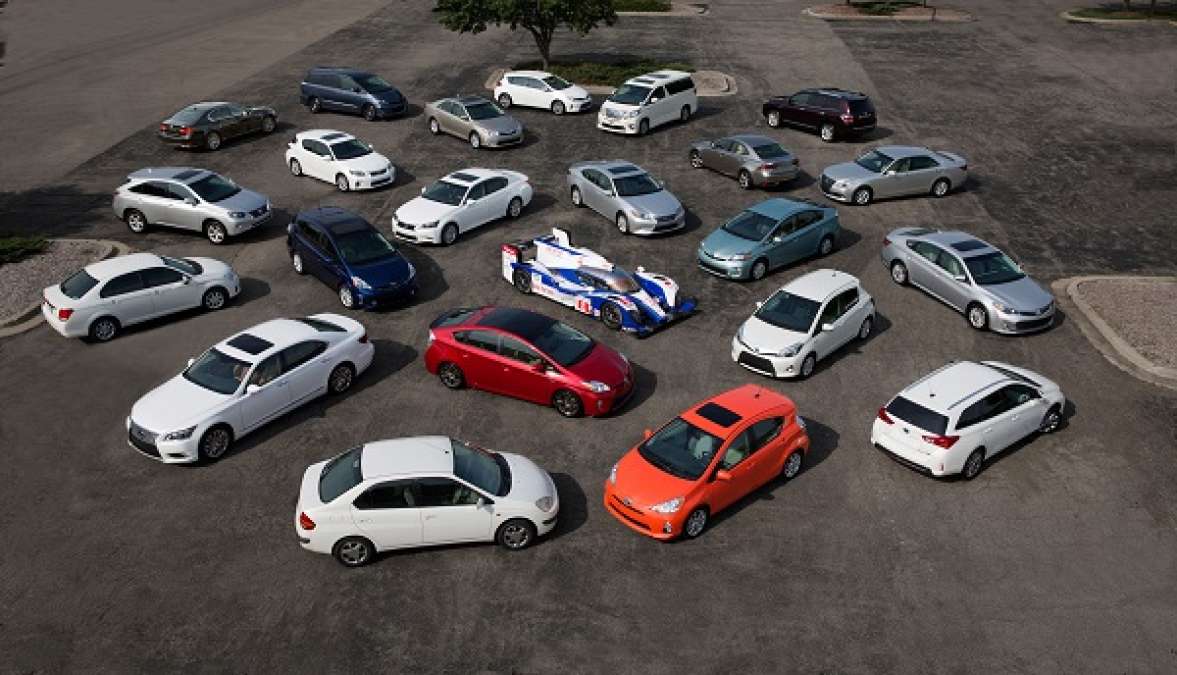The term green car can have many definitions, but if your definition includes hybrids, plug-in hybrid electric vehicles (PHEVs) and battery electric vehicles (BEVs), the green car market is down for the first half of 2014. Yet, overall our nation's vehicle fleet has seen significant improvements in overall fuel efficiency. How can this be?
We originally discovered the new decline in green car sales this while reading Nicolas Zarts’ (excellent) work on the Electric Drive Transportation Association website. We would have linked to a more direct part of the EDTA’s site, but it requires a password to view. A look at the combined numbers of all the green cars on this list shows that the total is off the 2013 pace by about 3%. Conversely, the US auto market is up overall over 4% so far this year. It is easy to see that green cars are on track to finish behind last year’s pace in both total sales and also as a percentage of the US industry. Mr. Zart attributes the decline to a bad June, but from our perspective June was not significantly bad for green car sales. He has a point, but Junes sales were better than other months this year.
Hybrid Sales Down
Hybrid sales are making the most impact in this decline. Hybrids are not only off the 2014 pace, they are also in decline in comparison to the first half of last year. We can analyze the Prius’ sales because Toyota does an excellent job of accounting for its hybrid sales. It publishes its Prius sales in great detail every month, something no other automaker has the guts to do. The Prius is very important because it makes up roughly a quarter of the entire hybrid market in the US and the Prius outsells all electric vehicles combined. The Prius sedan is down 17% YTD. The other three Prius models (C, V, and plug-in hybrid) are helping, but overall the Prius is down about 10% YTD.
A reason why hybrids may not be selling as robustly is that vehicles with conventional engines have now adopted many of the technologies originally found only on hybrids. For example, the constantly variable transmission and stop-start technology. These and other technologies have lifted fuel economy number so far that many cars with conventional drivetrains now rival the first generations of hybrids in their sales class. Dealers we communicate with tell us that many buyers who come in for a hybrid are shocked at how fuel efficient the “normal” version of the car they care considering is and do the math. They realize that the fuel savings are minimal and may take 5 to 10 years to really pay off. Lincoln Motor Company actually changed its price model because of this and stopped charging a premium for hybrids (compared to its base model engines). Years ago Chevrolet simply stopped calling some of its hybrid models "hybrids" and gave them some other eco-name.
Tesla Slows US Electric Vehicle Sales
Hybrids are the real reason the overall sales are down, but BEVs, pure electrics that don’t use any on-board gas range extender, are not doing well. One key reason for this is that Tesla’s US sales are down considerably over last year’s US sales. Despite healthy back-order bookings, and US customers still reporting that they are waiting for cars, Tesla has limited resources. Its expansion to other markets has left it without enough cars to meet last year’s pace. Without Tesla’s sales, the overall US BEV market has started to decline. The Nissan Leaf is helping to prop us sales. Sales of BEVs overall are still creeping up slowly, but as a percentage of total vehicle sales, BEVs are not gaining ground.
Plug-in Hybrids One Bright Spot
Plug-in hybrids like the Plug-in Prius are one area that green cars are doing well. The Prius Plug-in has more than doubled its sales rate in 2014. It now outsells such familiar models as the Mazda Miata and Scion FR-S sports car. In fact, the Plug-in Prius now outsells every Scion model (Scion is a division of Toyota). The 2015 Ford Fusion Energi PHEV also is doing very well. It was the number two vehicle with a plug of any type in the US market in June behind only the Nissan Leaf. The Ford C-Max Energi is also showing good growth and could soon be selling at over 1,000 units per month.
Green Car Sales Decline Silver Lining
The glass is either half-empty or half full depending upon one’s viewpoint and other interests. Although pure electrics still make a a tiny fraction of the US car market, and are not increasing as a percentage of sales, more affordable plug-in hybrids are making gains. Also, the US energy consumption per mile driven continues to improve steadily (much to the chagrin of those counting road tax revenue) and mainstream, gasoline-only, family cars like the Mazda3 and Toyota Corolla LE Eco we recently tested now measure their highway miles in a number starting with 4, as in 42mpg. A University of Michigan study (link above) says that compared to 2007, CO2 production due to cars and trucks is down about 20%. Maybe green cars sales are not really down and our definition just needs to change.
Related Stories:
As Tesla slips to fourth in sales many underestimate Toyota's impact on US electric car market
The 2016 Toyota Prius will top 60 MPG
BMW i3 sales split between BEV and REx versions mirrors overall market
Main story image shows The Toyota/Lexus family of hybrid models. Courtesy of Toyota media site.





